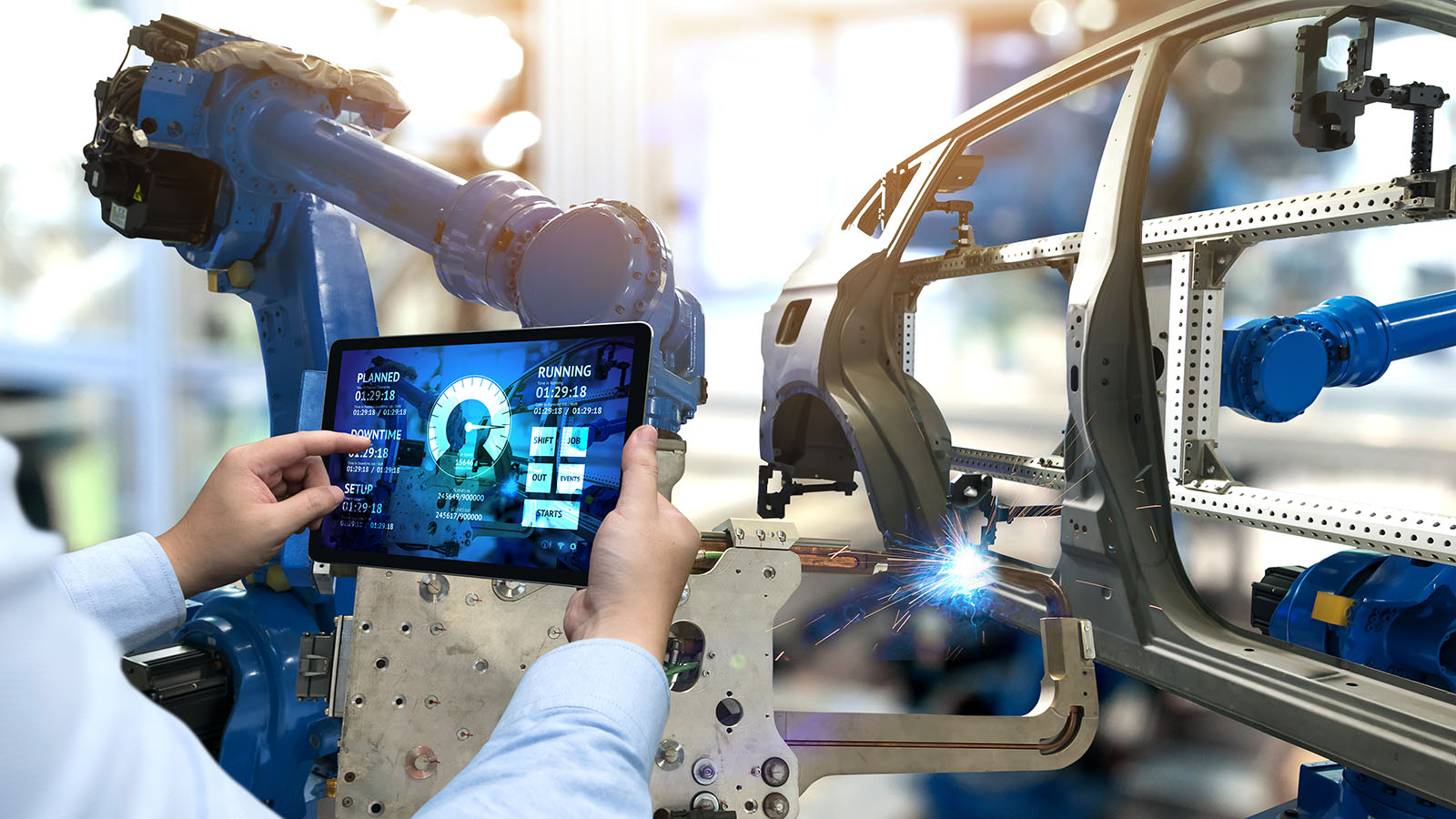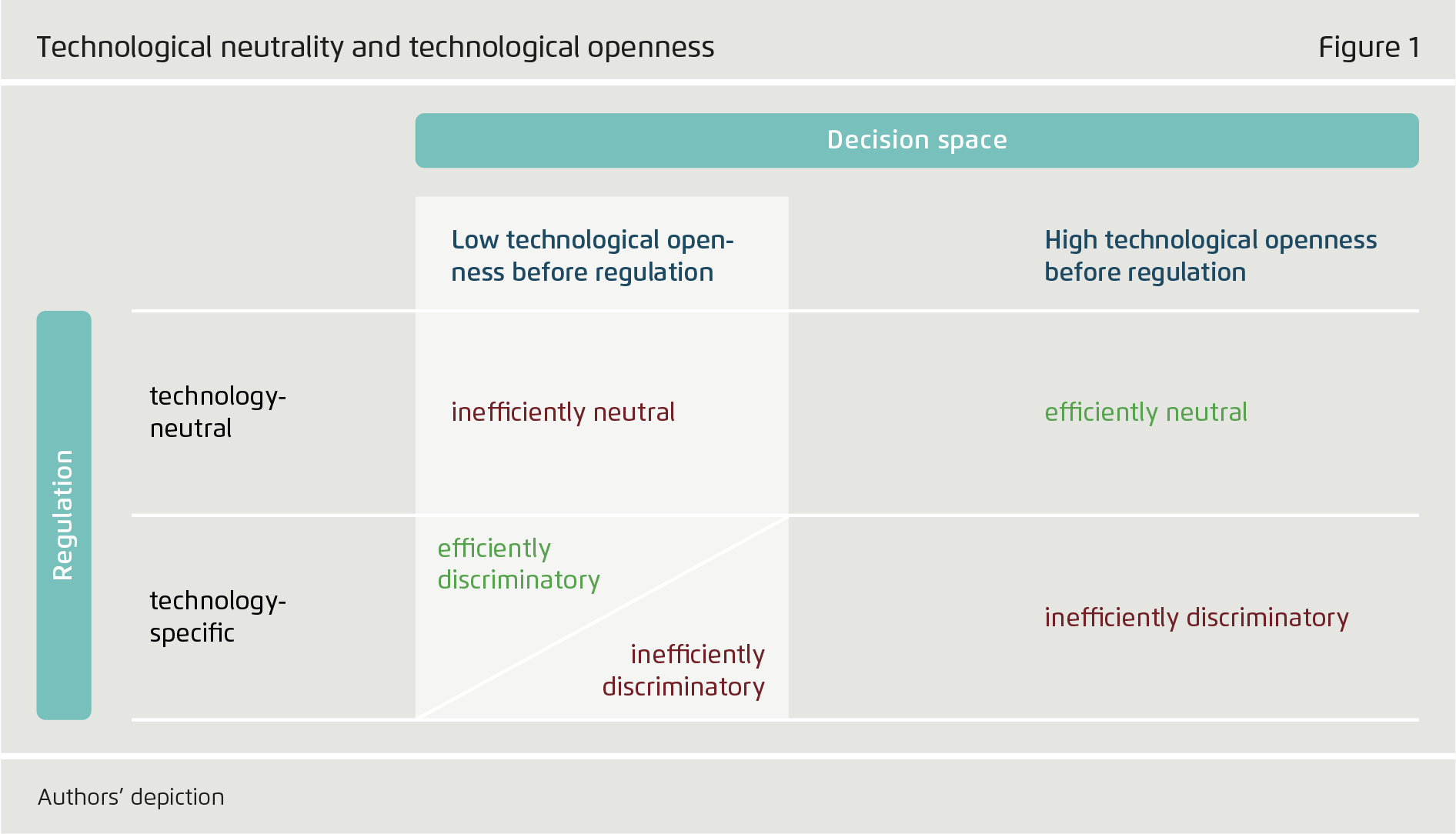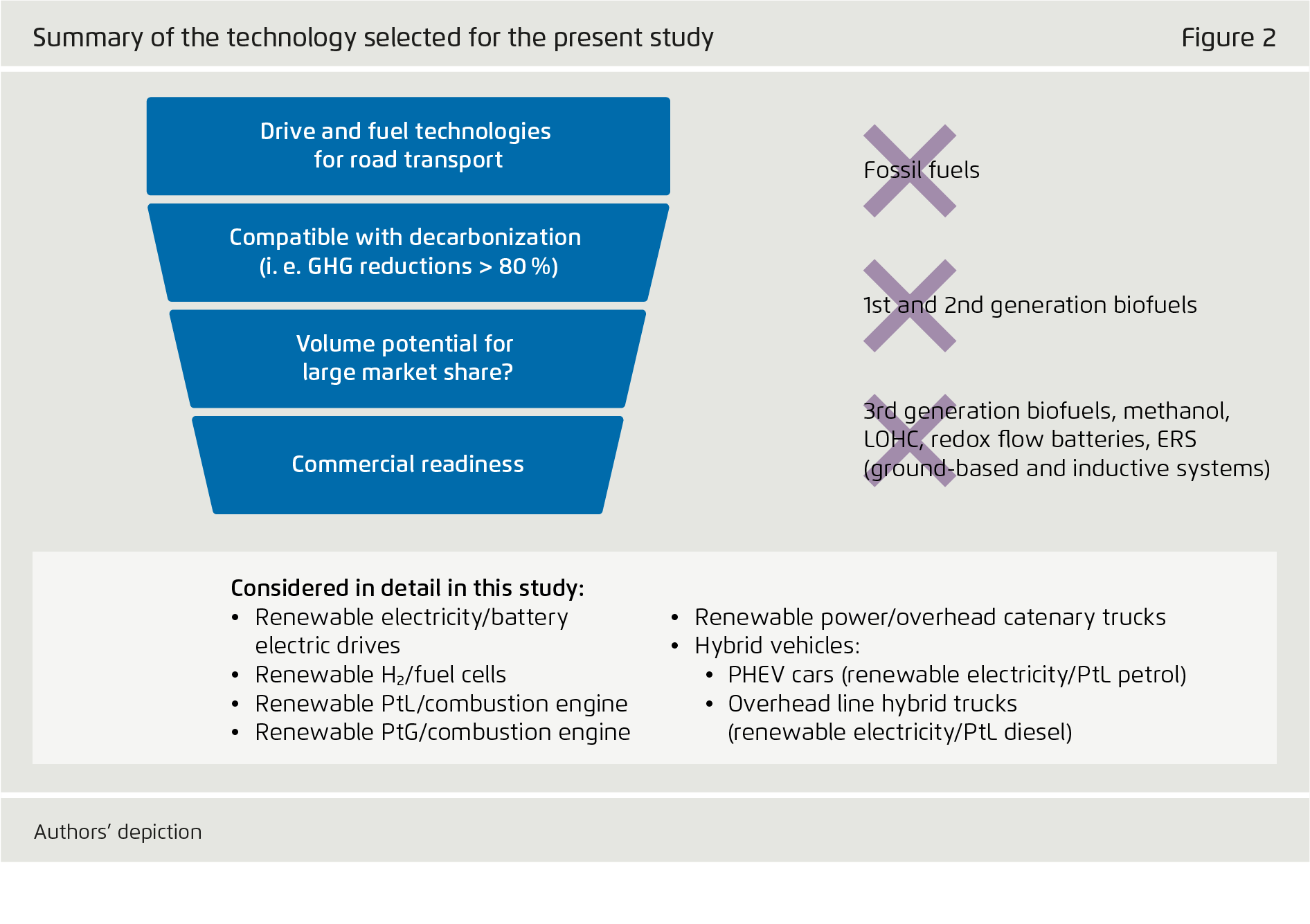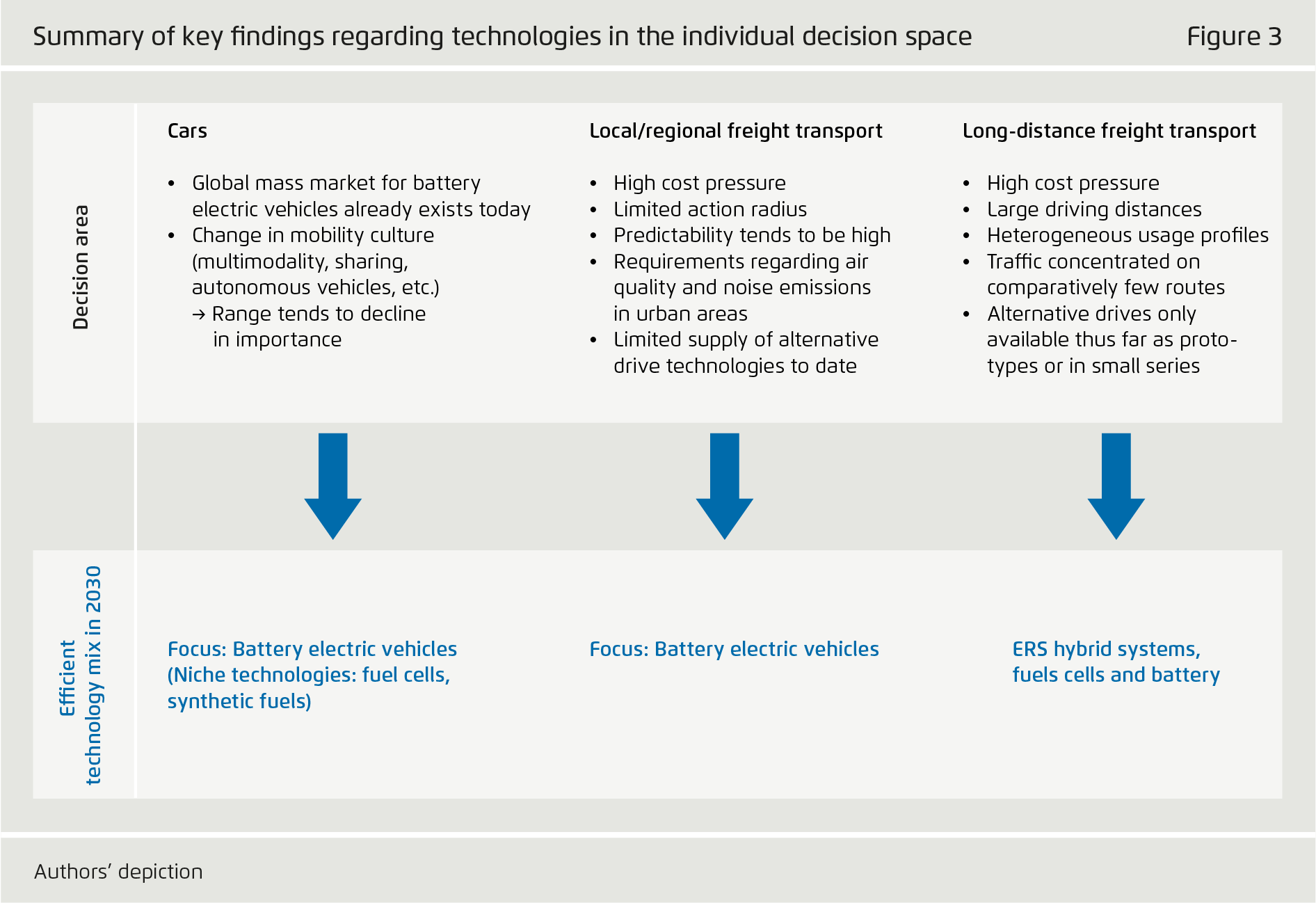-
Technology openness is a prerequisite for a successful and cost-efficient achievement of a sustainable transport sector.
This means switching to new drive trains and fuels in an undistorted competitive field factoring in all economic costs and benefits of the various technologies.
-
Technology openness does not mean technology neutrality.
Technology-neutral regulations do not discriminate against available technologies. They generate technology openness only when technologies compete against each other under undistorted conditions. However, in practice technology-specific regulations are needed as well to overcome path dependencies in the transport sector and to guarantee technology openness.
-
Technologies that harm the climate must be curbed to make space for new climate friendly ones.
Path dependencies and external costs bias technology competition towards combustion engines and fossil fuels. A key approach for correcting these distortions and supporting the market exit (exnovation) of fossil fuels is an effective carbon pricing. Other supplementary instruments are a carbon-based vehicle tax and strict fleet-wide emission limits for new cars.
-
Technology-specific policies are needed to promote infrastructure for new drive systems.
To find acceptance, drive systems require a sufficiently tight-knit and user-friendly energy supply infrastructure network. But the private sector can profitably build infrastructure only when the technology is widely used. Accordingly, the state should temporarily promote the expansion of infrastructure and create a regulatory framework that enables the simple usage of this infrastructure.
-
Support new technologies’ competitiveness.
In order to overcome remaining barriers, targeted and temporarily limited support programmes can facilitate the market entry and ramp-up of innovative technologies. The programmes should consider the state of development of technologies and their projected contribution to decarbonisation. Moreover, it seems desirable that the necessary financial means are raised in the transport sector itself, e. g., by the means of a bonus-malus system.
-
Generate investment security by a long-term political commitment to sustainable transport and ambitious policy measures.
Effective political commitment requires setting and achieving explicit sector targets. Moreover, the state should signal the inevitability of a transition towards a sustainable transport system by making targeted public investments and enacting a broad instrument mix for the reliable achievement of the transport sector emission target. Furthermore, it must seek to build the broadest political consensus possible.
Technology Neutrality for Sustainable Transport
Critical Assessment of a Postulate – Summary

Preface
Recent calls for technology neutrality have generated lively and controversial debates. But the discussions have also been characterised by conceptual vagueness. Many commentators use technology neutrality synonymously with the term technology openness. Others use these terms as a means to uphold the existing system. The lack of conceptual precision has spilled over into discussions about sustainable transport. Buzzwords have taken the place of arguments.
The purpose of this study is to provide basic conceptual clarity. Moreover, we want to supply the rational foundations for central policy decisions. In particular, we answer the question: Which regulation can ensure that the transition from internal combustion engines to low-emission drive trains and energy sources succeeds as cost-efficiently as possible?
The following study is no easy read. But it is nevertheless important. It takes an objective approach to discussions of technology neutrality and sustainable transport, creating the kind of solid foundation that expedient policy needs. And with the transition to sustainable transport set to begin in earnest, such policy is more urgent than ever.
Key findings
Bibliographical data
Downloads
-
Technology Neutrality for Sustainable Transport
Critical Assessment of a Postulate – Summary
All figures in this publication
Technological neutrality and technological openness
Figure 1 from Technology Neutrality for Sustainable Transport on page 10

Summary of the technology selected for the present study
Figure 2 from Technology Neutrality for Sustainable Transport on page 11



